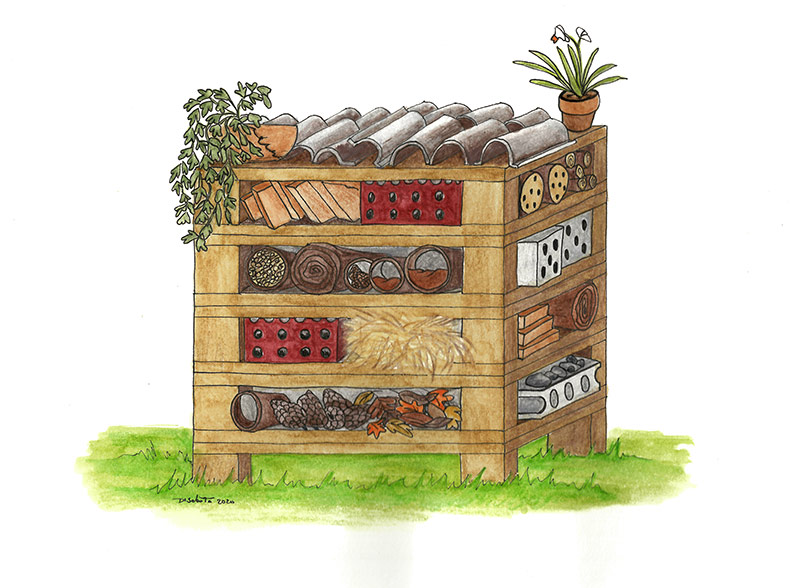To realize a “successful” bug hotel, the artificial shelter for our insect allies, we will have to keep in mind their needs: some guests will use it to shelter during the cold season, while others will use it to house their young.
Once the basic structure of the bug hotel is built, it will be “furnished” with some materials (natural and artificial) that will serve as accommodation for insects. It will be fine any type of hollow one or able to provide "small ravines".
- The bug hotel will have to be realized in a space of the wild garden as much as possible protected from the wind and exposed to the heat of the sun.
- It must also be protected from rain: make the bug hotel possibly under a shed or any other shelter, otherwise cover it with a special roof.
- Provide a net that contains the fall of small materials such as stones or pine cones.
- It is better to first set the most voluminous materials and then continue adding the smallest ones, so as to fill as much as possible all the empty spaces.

Natural materials
- Tree trunks already cut (to be drilled)
- Twigs
- Dry leaves
- Barks
- Straw
- Marsh reeds, bamboo canes
- Different size stones
- Pine cones
Other materials
- Wooden pallets (4-5)
- Hollow bricks
- Roof tiles
- Old flower pots
- Drill and bits (3-12 mm)
- Wheelbarrow (to transport materials)
- Metallic net
- Hammer and nails
Useful information
Some operations require the presence of an adult.
- Place the pallets on top of each other to form the structure that must be at least one meter high.
- Fill all the spaces of the structure, using the materials previously indicated according to your style. Remember that the purpose is to create as many ravines as possible. Look at the drawing as an example.
- Hollow corridors with no exit are required as dwellings for lone bees and black and yellow mud dauber . Therefore, use marsh reeds and bamboo canes to fit inside the pots (so that they remain still), or drill wooden trunks, making holes of 4-12 mm in diameter and 12-20 cm long.
- For green lacewings, ladybugs and earwigs should be prepared accommodations protected from the weather, for example pots and various hollow bricks to be filled with straw.